Posted by Elena del Valle on December 16, 2020
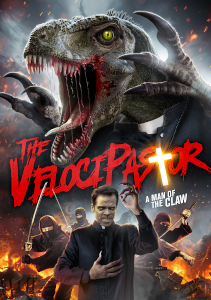
The Velocipastor poster
Photos: Filmocracy
Established in 2018 Filmocracy offers 2,800 independent films in a variety of genres in shorts, documentaries, feature length and series, except music videos, for an audience mainly between 25 and 40 years of age. The selection includes foreign language films with subtitles. One film, Road To Your Heart, was in Afrikaans without subtitles.
“Filmocracy is the only site that offers virtual film festivals and also rewards users for watching and rating movies,” said Paul Jun, chief executive officer, Filmocracy, by email when asked what makes the streaming platform stand out. “Users earn virtual popcorn which they can spend in our shop on things like gift cards, movie tickets, and festival passes. Most of our subscribers come through the virtual film festivals we host.”

Paul Jun, chief executive officer, Filmocracy
According to the website subscriptions range from free with ads to Festival Premium for $29.99 a month. Most of the 17,000 users are in the United States, mainly Los Angeles and New York, with large user groups in Spain, India, and Brazil, according to Jun.
Eight categories of rating options (Plot, Characters, Cinematography, Performances, Dialogue, Sound/Music and Overall) appeared whenever I paused the videos. A rating number appeared at the top of videos that had been rated. As of this writing a drop down menu at the top of the homepage listed eleven categories. There were also featured films and upcoming virtual film festivals, including the Blastoff Film Festival, DC Chinese Film Festival, Diorama Film Festival, Around Films International Film Festival Barcelona for the remainder of 2020.
The three most watched films in 2020? The Velocipastor, Temp to Perm (disturbing short), and Extra Innings. Top genres in number of films: Drama, Documentary. The company markets mostly on FaceBook, Twitter and YouTube. In addition to Jun the Los Angeles based company is owned by Kasia Jun Kaczmarczyk, Phillip Jun, Pawel Drzewiecki, and Jasper Grey.
Posted by Elena del Valle on November 18, 2020
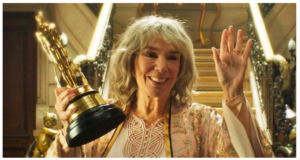
Graciela Borges is Mara in The Weasel’s Tale (El Cuento de las Comadrejas)
Photo: Outsider Pictures
The Weasel’s Tale (El cuento de las comadrejas), a new suspense film with touches of dark humor and romance, will open in United States theaters December 11, 2020. The unrated film is in Spanish with English subtitles. No video clip file was made available.
Four long-time friends sharing a stately home in Argentina find themselves the victims of an unscrupulous greedy couple seeking to con them out of their home permanently. A Spanish Argentina collaboration copyrighted 2019 the 129-minute film was directed and written by Juan José Campanella (The Secret in Their Eyes). It appears to be a remake of Los muchachos de antes no usaban arsénico, a 1976 film from Argentina by José A. Martínez Suárez.
The film was distributed by Latido in Spain and Outsider Pictures and Strand Releasing in the United States. The cast features Graciela Borges as Mara, Oscar Martínez as Norberto, Luis Brandoni as Pedro, Marcos Mundstock as Martin, Clara Lago Grau as Bárbara, and Nicolas Francella as Francisco.
Posted by Elena del Valle on November 10, 2020

Divine Love poster
Photo, video: Outsider Pictures
Divine Love (Divino Amor), a 95-minute unrated futuristic drama from Globo Films and Vitrine Films in Portuguese with English subtitles, will premier in United States theaters November 13, 2020. A joint release of Outsider Pictures and Strand Releasing it stars Dira Paes and Julio Machado as a couple experiencing marital malaise and difficulty conceiving while living in Brazil of 2027. Directed by Gabriel Mascaro (Neon Bull) promotional materials recommend it for adult viewing only (nudity, explicit sexual scenes). Scroll down to watch a trailer in Portuguese with English subtitles.
Set in what appears to be an oppressive regime the film tells the story of Joana, a woman desperate to have a child. She visits a drive-through religious counselor regularly. She uses her position in a government office to convince divorcing couples to stay together, often directing them to Divine Love, an evangelical cult she belongs to that mixes group therapy, swinging, traditional prayers and bible study. A male child’s voice narrates part of the dark story.
“The film takes place in a time when the majority of Brazil’s population are now Evangelical, but the state still claims to be secular,” said Mascaro in a press release. “It is a film that speculates the near future through an extraordinary allegory. Divine Love is a commentary on the conservative, fanatical and nationalist agenda that is spreading throughout the world and the way those that don’t espouse it, engage with it. Brazil has traditionally been referred to as a liberal and united country, where the annual Carnaval celebrations espouse the country’s diversity and cordiality. But the fact is that during the past few years, a cultural, social and political transformation led by powerful, ultra-conservative forces, has taken hold in the country. Instead of telling the story of a character fighting against against this conservative shift, I wanted to tell the story of a woman consumed by a desire to advance the conservative religious agenda in a very personal way. If a societal chasm has emerged as a result of hatred and misunderstanding, cinema is a space where I can fantasize improbable encounters.”
Divine Love received government funding and funding from Sor Fond Norwegian South Film Fund, Programa Ibermedia Mascaro, World Cinema Fund Europe, and Creative Europe Media. Mascaro is a Brazilian film director, scriptwriter and artist who lives and works in Recife, in the Northeast of Brazil. Initially known for his documentary work, his first fiction film premiered in the international competition of Locarno Film Festival in 2014. In 2015, he released his Neon Bull, which won the Orrizzonti Special Jury Prize at the Venice Film Festival and was Brazil’s entry to the Goya Awards in 2016. Divine Love, his third narrative feature, was an award winner at the Guadalajara International Film Festival and an official selection the Sundance Film Festival, Berlin International Film Festival and Miami Film Festival.
Posted by Elena del Valle on October 28, 2020

Rachelle Lefevre and Matt Whelan play a Canadian couple in The Sounds
Photo: Acorn TV
Video: South Pacific Pictures
Rachelle Lefevre and Matt Whelan play Maggie and Tom Cabbott, a Canadian couple in The Sounds, a psychological thriller from Shaftesbury in Canada and South Pacific Pictures in New Zealand. When Tom disappears, dark secrets and family plots complicate matters for Maggie. The TV miniseries is available in the United States via Acorn TV, a commercial free subscription streaming service offering foreign programing. Scroll down to watch a video trailers.
In the eight episode miniseries the happily married Canadian couple start a new life and a new salmon fishery business in a small harbor town. What starts as a promising adventure for the couple seeking to escape Tom’s oppressive family quickly spirals into an unsettling story.
“It was made for Acorn TV and CBC and Sky TV NZ,” said Rachael Keereweer, head of Communications, South Pacific Pictures. “The primary target audience here in New Zealand was a relatively broad, 25-54 demo. From idea, the show was several years in the making. The actual production schedule, including pre-production was 6 1/2 months with a shoot period of 13 weeks from mid-August to late November 2019.”
The visually stunning background scenery in The Sounds is in New Zealand. The series was filmed in Whangaroa at the top of the North Island in an area called the Bay of Islands and in Auckland.
“It’s a mystical, magical, wonderful, beautiful place,” said Lefevre about the Malborough Sounds in a series press kit. And when asked about the most enjoyable aspect of working on The Sounds Whelan said, according to the same promotional materials, “Shooting up North in Whangaroa, I’d never been there before and spending a couple of weeks out on the water, on yachts and kayaking and doing all sorts of cool things in beautiful locations around New Zealand.”
The program was created and written by Sarah-Kate Lynch (Blessed Are the Cheesemakers, The House of Daughters). Other creative staff include Peter Stebbings, director, and executive producers Kelly Martin and Sally Campbell.
South Pacific Pictures, in operation for 32 years, has produced more than 5,600 hours of drama series and serials, feature films, reality programming and documentaries for New Zealand, Australian, Canadian and United Kingdom broadcasters, according to the company website.
Shaftesbury is a Toronto based creator and producer of original content for television, film, and digital content, according to the company website. That includes 13 seasons of Murdoch Mysteries, three seasons of Frankie Drake Mysteries, three seasons of Slasher, Hudson & Rex, Departure, Dead Still, and The Sounds.
Posted by Elena del Valle on September 17, 2020

Light and Space
Photo, video: KECT
For serious art lovers California PBS station KCET will premier the eleventh season of Artbound at 9 p.m. P.T. Wednesday September 30. The hour long program featuring three artists and their work will focus on The Light and Space movement of a group of artists in California in the 1960s who explored minimalism with attention to the interaction of light and space. The materials the artists relied on to create their “perceptual experiences,” such as polyurethane, fiberglass and plastics, emerged from the postwar aerospace industry. The artists are Robert Irwin, Larry Bell, and Helen Pashgian. Primary production was December 2019 to February 2020. Scroll down to watch a video preview.
Artbound is an Emmy award-winning arts and culture series that examines the lives and works of arts of culture innovators, especially those making an impact in Southern California. The first episode will air again at 8 p.m. P.T. on Friday October 2 on PBS SoCal and at 10 p.m. E.T./P.T. Tuesday October 6 on Link TV (DirecTV channel 375 / Dish Network channel 9410). The episodes should also be available for online streaming following their initial broadcast on kcet.org/artbound, pbssocal.org/artbound and linktv.org/artbound as well as on Amazon, YouTube, Roku, Apple TV and the free PBS App.
Video
Posted by Elena del Valle on August 19, 2020

Gustavo Dudamel, host of the new series In Concert at the Hollywood Bowl
Photo, video: Adam Latham, KCET, Los Angeles Philharmonic Association
Southern California station KCET and the Los Angeles Philharmonic Association (LA Phil) will offer In Concert at the Hollywood Bowl, a six episode series of performances from the past 10 years. Hosted by Gustavo Dudamel, music and artistic director of the Philharmonic, the series will launch Wednesday, August 19, 2020 at 9 p.m. P.T. on KCET with Hecho in Mexico (Made in Mexico). It is scheduled to be broadcast on PBS stations around the country in early 2021, according to a press release. Scroll down to watch a video.
Hecho en Mexico features Dudamel and the LA Phil, Rodrigo y Gabriela, Natalia Lafourcade, Los Angeles Azules, YOLA (Youth Orchestra Los Angeles), and La Santa Cecilia. Gustavo and Friends is scheduled to air a week later at the same time featuring Dudamel, LA Phil, Misty Copeland, Pablo Ferrández, Amanda Majeski, J’Nai Bridges, Issachah Savage, Ryan Speedo Green, and the Los Angeles Master Chorale (LAMC).
On September 2 at 9 p.m the series will feature Jazz at the Hollywood Bowl Featuring Dianne Reeves with Ivan Lins, Christian McBride, Chucho Valdes, Cecile McLorin Salvant, Kamasi Washington and Mega Nova (Herbie Hancock, Carlos Santana and Wayne Shorter). Musicals and the Movies is scheduled for the following Wednesday featuring Dudamel, LA Phil, Kristin Chenoweth with Kevin Stites Audra McDonald with Bramwell Tovey, and Sutton Foster with Brian Stokes Mitchell.
Música Sin Fronteras (Music Without Borders) is scheduled to air Wednesday September 16 at 9 p.m. P.T. to celebrate Hispanic Heritage Month with Scully, Dudamel and LA Phil, Carlos Vives, Café Tacvba, Siudy Garrido Flamenco Dance Theater, and Paolo Bortolameolli. Fireworks! is scheduled for the following Wednesday at the same time featuring Katy Perry, Pink Martini, Thomas Wilkins, Nile Rodgers & Chic, Diego El Cigala, Dudamel and LA Phil, and John Williams.
With a seating capacity of nearly 18,000, the Hollywood Bowl is among the largest natural amphitheaters in the world. KCET, a content channel of the Public Media Group of Southern California, is a donor-supported community institution, according to press materials. The Los Angeles Philharmonic Association presents live performances of orchestral, pop, rock, country, jazz, blues, Latin, world music, opera, chamber, Baroque, organ and celebrity recitals, theatrical performances, explorations of film music, dance, comedy, and multimedia productions.
Posted by Elena del Valle on June 3, 2020
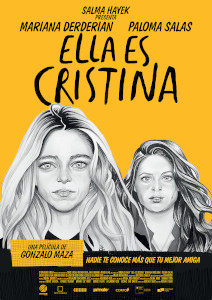
This Is Cristina (Ella Es Cristina) poster
Photo: Figa Films
One of the feature films in this year’s 19th Los Angeles Latino International Film Festival (LALIFF), part of the Festival’s Official Selection, was This is Cristina (Ella Es Cristina). The 82-minute Chilean film from Mar Humano and Primate Lab, in Spanish with English subtitles, was directed by Gonzalo Maza and distributed by Figa Films. Scroll down to watch a trailer.
Salma Hayek was executive producer along with José Tamez and Siobhan Flynn. The film received support from the Fondo de Fomento Audiovisual. The 2018 film, starring Mariana Derderian, Paloma Salas, Roberto Farias, Daniella Castillo, Nestor Cantillana, Alejandro Goic and Claudia Celedon, tells the story of two women in their thirties, Cristina and Susana, who have been best friends since high school. As their lives change their friendship suffers and is tested. There is a surprise ending. The film should be available at festivals and online beginning in September.
Despite the COVID-19 pandemic this year’s Los Angeles based Festival, established in 1997, included seven feature films and 23 short films from 12 countries. The festival took place May 5 to 31, 2020. The countries represented were Argentina, Australia, Brazil, Canada, Chile, Colombia, Cuba, Mexico, Peru, Spain, United States and Uruguay.
Other features included Paper Children and The Last Rafter. Shorts included: 1, 2, 3, All Eyes On Me Accents; Acuitzeramo; Ailin on the Moon; Baby; Blanes and St. Muller; Borrachero; Flesh; Flowers Within; Lady Justice; María; Miguel; Muy Gay Too Mexicano; Napo; Ode to the Beans; Rizo; Say You Will; Status Pending; The Undocumented Lawyer; and Wilderness.
An organization spokesperson declined to identify the names of the individuals responsible for selecting films for inclusion in this year’s festival. Funding, she said, is from “sponsors, donors and grants.” As of this writing the only contact information available on the event website is via a contact form. No street address or phone number are listed.
According to a press release for the festival “LALIFF is presented by the Latino Film Institute (LFI), a nonprofit 501(c)(3) organization with the mission to showcase, strengthen, and celebrate the richness of Latino lives through the audio-visual event. According to the LALIFF About Us page, “The Latino Film Institute (LFI) showcases, strengthens, and celebrates the richness of Latino lives by providing a pipeline, platform, and launching pad from our community into the entertainment industry.” It describes LALIFF as “dedicated to showcasing the entirety of human experience from the Latino perspective, whether through film, television, digital, music, art, or any other vehicle, regardless of platform.”
Posted by Elena del Valle on May 13, 2020
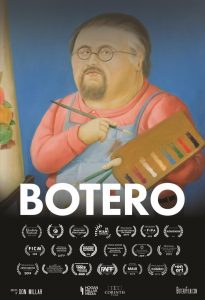
Botero poster
Photo: Corinth Films
An 84-minute long film showcasing the life and art of Fernando Botero, known internationally for his paintings and sculptures, was released by Corinth Films this month in several California, Pennsylvania, Minnesota, Louisiana and Colorado theaters. It has appeared in 13 film festivals. A trailer was not available.
It features interviews with the author, his adult children and other relatives as well as art curators, academics and historians. It is in Spanish, English, Italian, and French with English subtitles. The 2018 film was directed by Don Millar, written by Millar and Hart Snider. According to promotional materials, it includes original footage shot in 10 cities across China, Europe, New York and Colombia, with decades of family photos and archival video. His daughter, Lina Botero Zea, is listed as chief creative consultant and executive producer. This may account for the film’s access to the artist and his family as well as family homes and the artist’s studio in Monaco.
Millar is a Canadian film and television director based in Vancouver. His previous directorial credits include the climate change documentary Oil Slick, Full Force about rugby star Harry Jones, and the scripted narrative Off the Clock. Corinth Films has been distributing foreign and independent arthouse cinema in the United States and Canada since 1977.
Posted by Elena del Valle on May 6, 2020

Nuestras Madres poster
Photo, video: Outsider Pictures
Nuestras Madres (Our Mothers), a 78-minute documentary style drama in Spanish with English subtitles from Outsider Pictures had its virtual theater release at 15 locations in the United States last week. The somber film was Winner Camera D’or, Cannes Film Festival and Belgian Entry to 92nd Academy Awards. Scroll down to watch a trailer.
It features Mexican actor Armando Espitia as Ernesto, a young anthropologist working for the Forensic Foundation in Guatemala in 2018 during the trial of the soldiers who sparked the civil war. Charged with identifying the bodies of the missing he has a personal mission. Emma Dib is Cristina, his mother.
The account of an older woman from a small village convinces Ernesto he has a promising clue to find his father, who went missing during the war. Although his mother and his boss urge him to leave well enough alone he presses forward.
César Díaz, director, heard from his mother about his father, also a “disappeared” guerrilla fighter. He began the project as a documentary about military massacres during the Guatemalan civil war in the 1970-80s. After meeting women in the villages where the fighting took place he turned it into a feature drama. According to promotional materials, their testimonies, often full of violent tales, reveal the story of Guatemala’s history as one of the first Central Intelligence Agency “Black Operations.”
“In Guatemala, fathers are absent as a general rule,” Díaz said in a press release (he was not available for a podcast interview). “Many children born of rape think that their father just left at some point. I therefore wanted the mother to reveal her secret, because it is a way of accepting and living with the consequences of what has happened. In a post-dictatorship, post-war situation, I think there must be collective acceptance, which can then be followed by individual moving on. Nuestras Madres is, to my knowledge, the first film to deal with this subject head-on.”
According to press materials for the film only 1 percent of the disappeared have been identified after over 20 years of searches. The genocide trial in the film is a mixture of many trials taking place, as is the uncovering of mass graves and returning the bodies to the families.
The film was made with the support of Centre du Cinéma et de l’Audiovisuel de la Fédération Wallonie Bruxelles Proximus Eurimages. Born in Guatemala in 1978 Díaz studied in Mexico and Belgium. He attended a screenwriting workshop at La Fémis (Ecole Nationale Supérieure des Métiers de l’Image et du Son, the FEMIS Film School) in Paris, France. He has been a fiction and documentary film editor for more than a decade. He directed the short documentary films Semillas de Cenizas screened in twenty international film festivals. Nuestras Madres is his first feature film.
Beginning May 1, 2020 Our Mothers became available nationally via local art house cinemas for $12 per ticket, split equally with the local cinema to help support them during the pandemic. As of this writing the theaters are: in California: Los Angeles at Laemmle Theaters, Davis at Varsity Theater, Larkspur at The Lark, Santa Ana at The Frida Cinema, San Diego at Digital Gym Cinema; in Denver, Colorado at SIE Film Center; in Florida: Fort Lauderdale/Hollywood at Fort Lauderdale International Film Festival, in Miami at Tower, in Tampa at Tampa Theater; in Michigan: Detroit at Cinema Lamont, Ann Arbor at Michigan Theater; in St Louis, Missouri at Webster University Film Series; Albuquerque, New Mexico at The Guild Cinema; in Buffalo New York at North Park Theater; in Cleveland, Ohio at Cleveland Cinematheque; and in Philadelphia, Pennsylvania at Cinespeak.
Posted by Elena del Valle on February 27, 2020

Blood Lions poster – click to enlarge
Photos, video: Blood Lions
There may be as many as 12,000 lions in 350 breeding farms in South Africa living a desperately sad existence, according to Pippa Hankinson. She became appalled at the conditions of the captive lions in a remote breeding farm she visited in South Africa in 2011. After researching the subject at length and finding there were many similar farms she set out to share her discovery with the world. Four years later Blood Lions, an 84-minute feature documentary became available internationally. Scroll down to see a trailer.
“After over a year of intensive research, it was apparent that very few people were aware of the full extent of the industry – neither abroad nor in South Africa,” Hankinson, producer, Blood Lions, said by email when asked about the film*. “I felt strongly that the world needed to know, and decided that a film would be the most expedient way to create global awareness around what I saw as being complete exploitation.”
About the target audience for the film she said, “Widely speaking, the target audience for Blood Lions is the general public – particularly the youth – around the world. More specifically we aim to educate the travel industry i.e. tour operators sending clients to South Africa, as well as to empower tourists and young volunteers to encourage them to make responsible and ethical choices when visiting this country. And lastly we invite all those in positions of influence around the world to watch the film, and to help elicit policy change which will ensure the protection of all predators (and indeed all our wildlife) from cruelty, exploitation and commercial practices which are harmful and disrespectful, and which create ‘markets’ for the abusive and unethical use of our wildlife.”
The goal? “Blood Lions was produced to shine a light on the insidious practices of predator breeding and canned lion hunting in South Africa, as well as associated activities such as interactive tourism and the lion bone trade to SE (south east) Asia. Our aim was to reach as broad an international audience as possible in order to build global awareness and knowledge around the industry. It was – and still is – a ‘call to action,’ not only to effect behavioural change around how we treat our wildlife, but also to precipitate change in policy through garnering support from the world’s most influential individuals and organizations. Ultimately, we hope to see an end to captive predator breeding.”
When asked how easy filming was she said, “Our main challenge when filming Blood Lions was to appear as ‘amateur’ as possible, whilst at the same time securing HD (high definition) quality documentary video footage, so our filming/production approach was to be as low key as possible. This meant only one camera person – using highly mobile camera/audio equipment – who often posed as a tourist. A ‘spy camera’ was used to capture certain scenes where a conventional camera might have aroused suspicion. The use of a stills camera that was also able to shoot video, was also very useful in keeping a low profile. Another critical component of the film was the challenge of obtaining imagery from volunteers or staff who working on the captive lion breeding farms, who had the ability to get unique access to ‘behind the scenes’ animal and human behaviour. Suspicious predator breeding and hunting farm operators made life very difficult for us when they tipped off their colleagues that ‘greeny’ photo journalists were asking questions and capturing images on their properties. Some of the farms were therefore expecting us, and after a lot of threats, demanded that we leave the premises immediately we arrived. It was on these occasions that our hidden camera paid off. When we visited the hunting farm, our team posed as a private small film crew who were following an American client to make his own personalised African hunting safari video. This worked until such time that canned lion hunting operators once again became suspicious, and went so far as threatening to ‘kill us’ which forced our camera team to immediately leave their fenced hunting farm.”
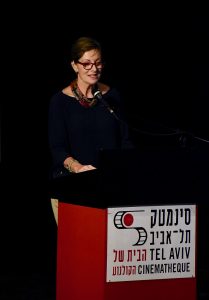
Pippa Hankinson, founder, Regulus Vision Pty Ltd
Many farm raised captive animals are hunted. When asked why she focused on lions the film producer said, “As you say, many farms raise captive animals to be hunted, but there is a ‘double-edged sword’ to the breeding of predators as they are not only bred to be hunted, but for their bones to be exported to supplement the ‘tiger bone trade’ in SE Asia. No other wild animals are hand-raised and bottle fed…simply for the bullet. Furthermore, most internationally recognised lion ecologists agree that the captive lion breeding industry has no conservation value whatsoever. Although captive hunting statistics have decreased, the demand for lion bones from Asia has increased dramatically over the last few years, leading to fears that this demand will inevitably put pressure on wild populations, as poaching increases and the illegal trade and trafficking intensifies.
Although my passion for wildlife extends to all animals, it seemed incomprehensible to me that these magnificent, iconic predators should be exploited in such a way. Lions are a keystone species at the top of the food chain, and they play a critical role in our ecosystem. There is no doubt in my mind that they are wild creatures, and that all wild species should be allowed to live out their lives in their natural habitat, and not forced into captivity to be mass bred for commercial purposes. To lion breeders in South Africa they are seen simply as commodities to be used to generate a lucrative income through interactive tourism and volunteering, trophy hunting and the sale of their body parts. It is now estimated that there are between 8,000 and 12,000 predators currently being held captive in over 350 breeding facilities across South Africa… very similar to ‘puppy mills’ in the USA. They lead heartbreaking lives and the cycle never ends.
Lion cubs born in captivity in South Africa are removed from their mothers within the first week of birth, and are passed off as ‘orphans’ or ‘rescues’. This practice of removing the cubs forces the females into intensive breeding cycles where lionesses produce up to five times more litters of cubs than they would in the wild. These tiny cubs are bottle fed, petted and hand-reared by paying tourists and volunteers who are led to believe that they are supporting authentic conservation projects which will rehabilitate these predators back into the wild. Nothing could be further from the truth. When the cubs grow too old for ‘pay and play’ activities, many are moved to facilities that offer ‘walking with lions’ tourist attractions. These sub-adult lions are often sedated, and trained in the same way as circus animals, to climb trees and pose for ‘selfies’ with paying tourists: facebook.com/BloodLionsOfficial/videos/1039594396154923/
Once these lions are considered too dangerous to be in contact with humans, some are sent to canned (captive) hunting facilities where they are shot in confined enclosures by trophy hunters. Others are sold to zoos or traders as breeding stock for new facilities, or private collections around the world. Completing the cycle of exploitation, lions that are not used for the above purposes are euthanized or slaughtered for their body parts to be exported to Asia to supplement the ‘tiger bone trade.’ The skeletons are utilised for medicinal and aphrodisiacal purposes in the production of what is called ‘tiger wine’ and ‘tiger cake,’ and also for use in ‘tiger bone jewellery’: facebook.com/BloodLionsOfficial/videos/1062460323868330/. This trade is also extremely worrying from a welfare perspective, as animals shot for their trophies in canned hunts are required to be in a reasonably good condition, whereas lions bred for the bone trade are bred intensively with little or no consideration towards their health or welfare: facebook.com/BloodLionsOfficial/videos/1447633032017722/”
Eighteen months after her deeply disturbing visit to a South African lion breeding farm in 2011, Hankinson founded Regulus Vision Pty Ltd to produce Blood Lions. She remains actively involved in the Blood Lions Campaign launched after the film’s release, “in order to continue to create further global awareness around the exploitation of the captive lion breeding industry.” The Blood Lions team members are Bruce Young and Nick Chevallier, directors; Hankinson and Jeremy Nathan, producers; Ian Michler, special consultant and lead character; Wildlands and Andrew Venter, executive producers; Bruce Young, script; Nick Chevallier, camera; and Dave Cohen, editor.
In 2015, Blood Lions premiered at the Durban International Film Festival in South Africa. Engagements with MSNBC and Discovery International followed. The film has appeared in 180 countries and territories around the world. It was screened at 17 international film festivals and hosted by the Blood Lions team in 25 countries. In the United States Blood Lions is available online at the PBS shop, Amazon, Ecostreamz and the Wildlife Conservation Channel.
*Text edited for style, length and clarity.





















